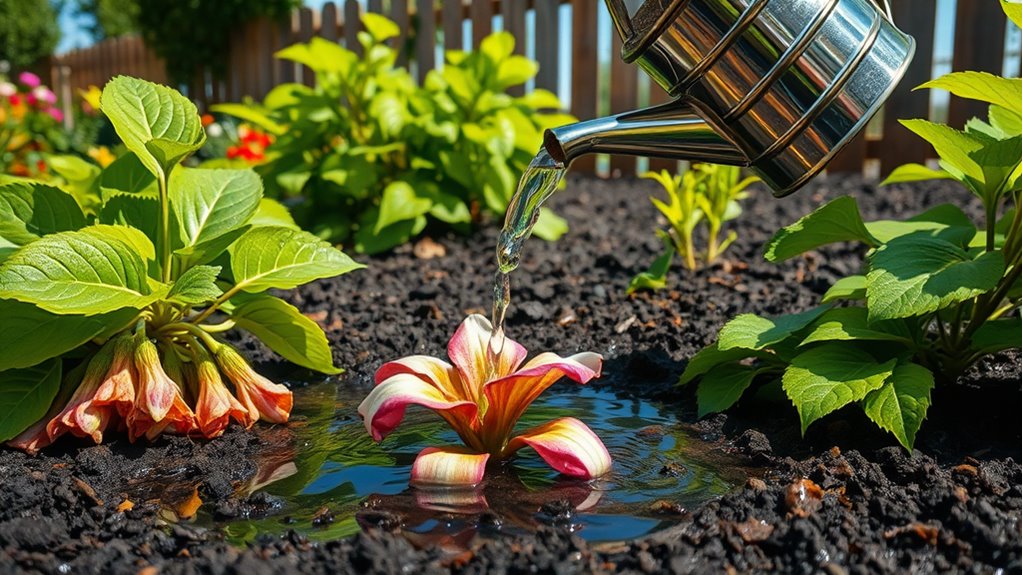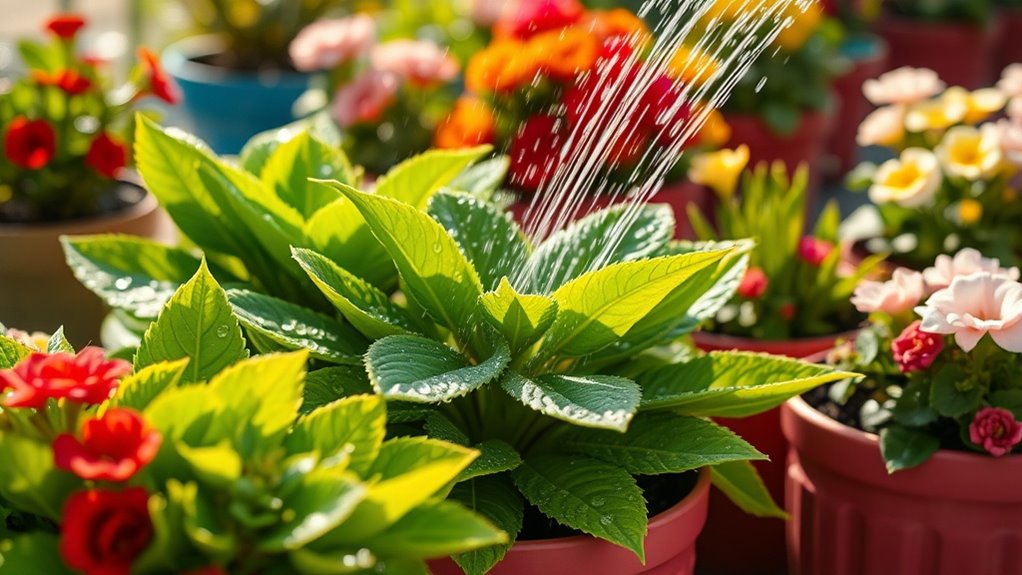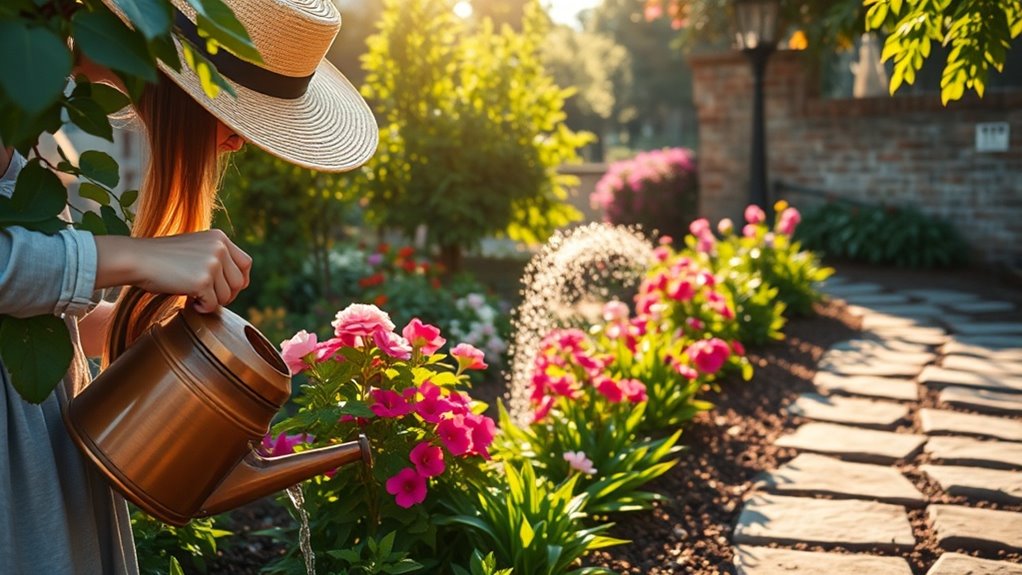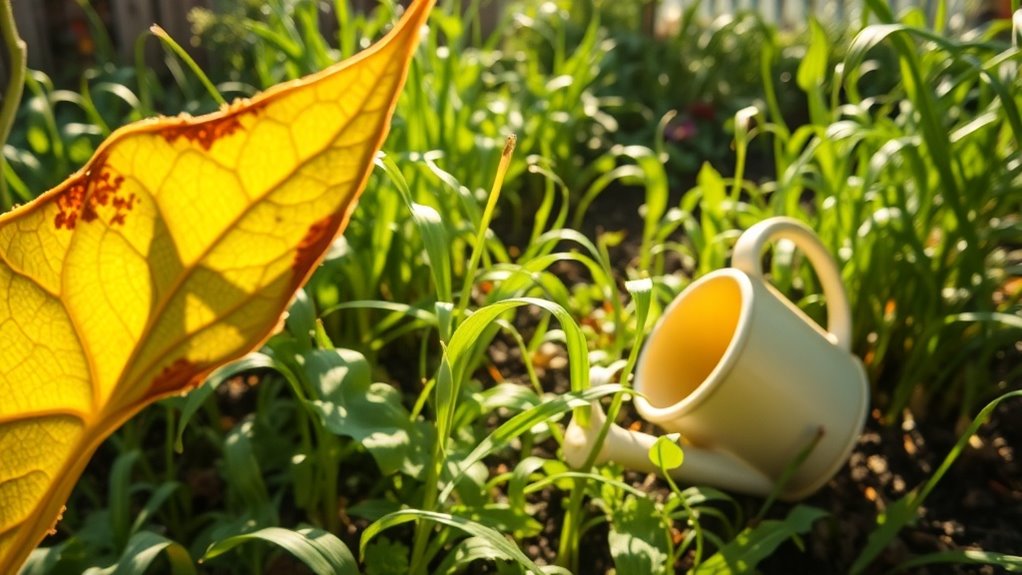Watering Too Much. Here’s a Simple Test to Know for Sure
Like a sponge that can’t absorb any more water, your plants can suffer when you overindulge them with too much moisture. Yellowing leaves and wilting stems are just a few signs that your watering routine may be off. But how can you be sure? There’s a simple test you can conduct to gauge soil moisture levels effectively and adjust your watering habits accordingly. Let’s explore this straightforward method to keep your plants thriving.
Key Takeaways
- Stick your finger two inches into the soil; if it’s wet or soggy, you may be overwatering.
- Check for pooling water at the pot bottom, which indicates drowning roots.
- Look for yellowing leaves, a common symptom of excess moisture stress.
- Observe wilting plants; this can indicate moisture-related issues despite saturated soil.
- Adjust your watering routine based on seasonal changes and plant needs to prevent overwatering.
Signs of Overwatering in Plants
Overwatering can lead to several detrimental signs in your plants, making it crucial to recognize these indicators early. Common overwatering signs include yellowing leaves, which often indicate root stress, and wilting despite saturated soil.
You might also notice a musty odor from the soil, suggesting root rot. If your plant’s lower leaves start dropping off, that’s another red flag. Additionally, persistent waterlogged conditions can lead to fungal growth on the soil surface. Recognizing these symptoms early will help you maintain your plants’ health and prevent further damage caused by excess moisture.
Understanding Soil Moisture Levels
How can you effectively gauge the moisture levels in your soil? You can use a simple moisture meter or the finger test. To help you understand the moisture levels, refer to the table below:
| Moisture Level | Soil Appearance | Plant Response |
|---|---|---|
| 0% | Dry and crumbly | Wilting, leaf drop |
| 10% | Slightly dry | Stunted growth |
| 20% | Moist but not soggy | Healthy growth |
| 30% | Dark, damp | Thriving, vibrant |
| 40% | Wet and muddy | Root rot risk |
Regular monitoring ensures your plants thrive. Overwatering can lead to detrimental effects on plant health, making it essential to check moisture levels consistently.
The Simple Test for Overwatering
Is there a straightforward way to determine if your plants are receiving too much water?
Yes, you can conduct a simple test to assess soil moisture levels.
Follow these steps:
-
Stick your finger about two inches into the soil. If it feels wet or soggy, you might be overwatering.
-
Check for drainage by observing the pot’s bottom. If water pools there, your plant’s roots may be drowning.
-
Look for plant symptoms like yellowing leaves or wilting. These can indicate stress from excess moisture. Additionally, it’s essential to consider the ideal watering schedule based on your garden’s needs for optimal plant health.
Adjusting Your Watering Routine
When should you adjust your watering routine to keep your plants healthy?
Pay attention to your plants’ signals.
If you notice yellowing leaves or wilting, it may indicate overwatering.
Conversely, dry soil and drooping leaves suggest underwatering.
Adjust your routine based on weather conditions; increase watering during hot, dry spells and reduce it during cooler, rainy days.
Check soil moisture regularly using your finger or a moisture meter.
Implement a consistent schedule, but remain flexible based on your plants’ needs.
Additionally, consider watering your plants during the best times of day to maximize their health and growth.
Tips for Healthy Plant Care
Healthy plant care requires a holistic approach that incorporates proper watering, lighting, soil management, and pest control.
To ensure your plants thrive, follow these essential tips:
- Water Wisely: Check the soil moisture before watering; only hydrate when the top inch is dry.
- Optimize Lighting: Position your plants according to their light requirements—some need direct sunlight, while others thrive in shade.
- Maintain Soil Quality: Use well-draining soil and amend it with organic matter to enhance nutrient availability and aeration. Additionally, consider implementing seasonal watering strategies to further optimize water usage throughout the year.





